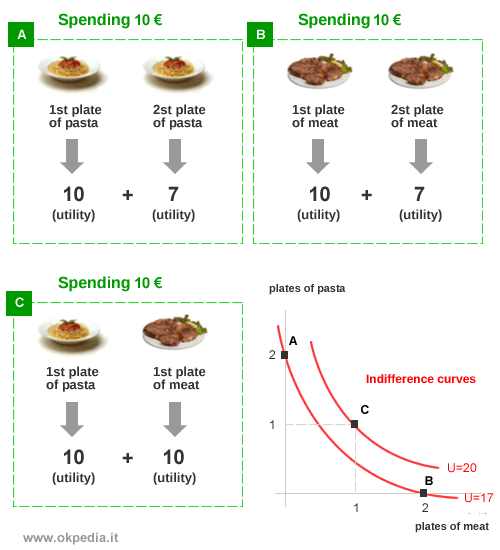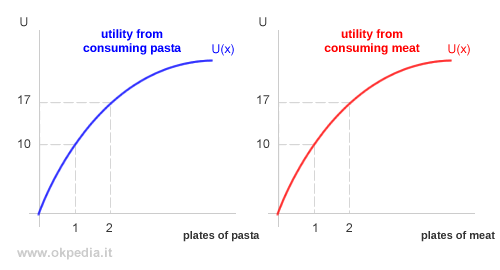Convexity of the Indifference Curve
Why Are Indifference Curves Convex?
Indifference curves are convex due to the principle of diminishing marginal utility - the more you consume of a particular good, the less additional satisfaction each extra unit provides. This is why mixed consumption bundles tend to offer greater overall utility than more extreme choices. The convexity axiom of the indifference curve is a cornerstone of consumer preference theory.
A Practical Example
Let’s say someone has €10 to spend and can either order two plates of pasta (Option A) or two plates of meat (Option B). Each choice yields a certain level of satisfaction, UA or UB. But there’s also a third option: a combination - one plate of pasta and one of meat (Option C). Even though the cost is the same, this mix typically results in a higher utility, UC, than either A or B alone.

Option C lies on a higher indifference curve, meaning it delivers greater overall satisfaction than Options A or B. The reason is simple: as consumption increases, marginal utility decreases (diminishing marginal utility). The second helping of either pasta or meat brings less pleasure than the first, so consuming a variety - one of each - maximizes total satisfaction.

In short, when choosing between two goods, consumers tend to get more overall utility from a balanced mix than from doubling down on just one item.
 The first plate of pasta or meat provides a utility of 10, but the second plate only adds 7. So, going with two identical dishes (Options A or B) yields a total utility of 17. In contrast, opting for one plate of each (Option C) gives a total utility of 20 - higher than the alternatives - since the consumer benefits from the full utility of the first serving of both items.
The first plate of pasta or meat provides a utility of 10, but the second plate only adds 7. So, going with two identical dishes (Options A or B) yields a total utility of 17. In contrast, opting for one plate of each (Option C) gives a total utility of 20 - higher than the alternatives - since the consumer benefits from the full utility of the first serving of both items.
